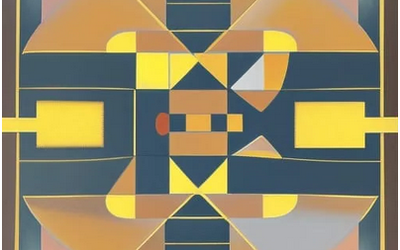
The Wisdom of Tarrasch
An offhand comment by Tarrasch teaches me a valuable lessonWhen I was starting out in chess, I was very keen on Nimzowitsch and tried to read all of his books (with mixed results). I never read Tarrasch because I thought that he was old-fashioned and, dare I say it, uncool. Now, thirty years later, I realise that that was a mistake. I would have learned a lot more if I had started with Tarrasch. Not only is he a very good annotator, but his notes are full of practical tips and pearls of wisdom. Here is an example.
This position comes from the game Leonhardt-Capablanca 1911. Leonhardt sacrificed a pawn in the opening but failed to get compensation for it. Capablanca exchanged down to an ending with an extra pawn and two bishops apiece. It is obvious that Black is better in this position. What should white do?
When I saw this position, my instinct was to play the move 30. h4. I am in good company, since this is also the move chosen by Leonhardt, who was a strong player! What is the rationale behind the move? Well, a principle of endgames says: If you are behind on material, try to exchange pawns but not pieces. If you are ahead, try to exchange pieces but not pawns. The move h4 aims to exchange some pawns as quickly as possible. It threatens h5, although black can parry the threat with 30... f5. But 30. h4 was given a question mark by many annotators, including Tarrasch. Here is what he had to say:
The pawns of the weaker side should rarely advance as they offer targets of attack and facilitate the creation of a passed pawn.
This was quite an eye-opener for me. The reason why it's not good to play h4 in this position is because (a) the pawn is easier to attack on h4 and (b) playing h4 gets black closer to exchanging down to a passed pawn on the kingside.
What actually happened in the game was that Capablanca was able to create a pair of connected past pawns on the kingside. Meanwhile, Leonhardt created a single passed pawn on the queenside. Capa slowly advanced his pawns and, with great skill, managed to win the game.
Thinking a bit deeper, why were my instincts about h4 wrong? I think it's one of those situations where the right pawn move depends on which pieces are on the board. If there had been rooks on the board, h4 would probably have been a very good move. This is the concept of the minority attack, where you advance a pawn minority in order to create a passed pawn for your opponent, which is then isolated and weak. But without rooks, isolated pawns are not so weak. Rooks are very good at stopping pawns from advancing because they can control all the squares on a file. Bishops, not so much. So h4 is usually a good move in this sort of pawn structure, but not if nobody has anything but bishops!
Similar situations arise in, for example, rook endings, where people are much more willing to play moves which create apparent weaknesses, for example by arranging pawns on f2-g3-h4. This weakens a whole bunch of white squares but guess what? There are no knights or bishops on the board, so there is nothing much to attack them! (The king, maybe, but the king can't usually do much if there are rooks around). So the concept of "don't create weak squares by playing g3 and h4" doesn't generally apply in a rook endgame. Similarly, the concept of "advance your pawn minority in order to weaken your opponent's pawns" doesn't generally apply in a bishop endgame like this one. The right thing to do was to wait and do nothing. Pawn structure considerations from the middlegame don't always carry over to the endgame. It really depends on what pieces are left on the board.
Now I have a new endgame principle to confuse me! Thanks, Tarrasch!

